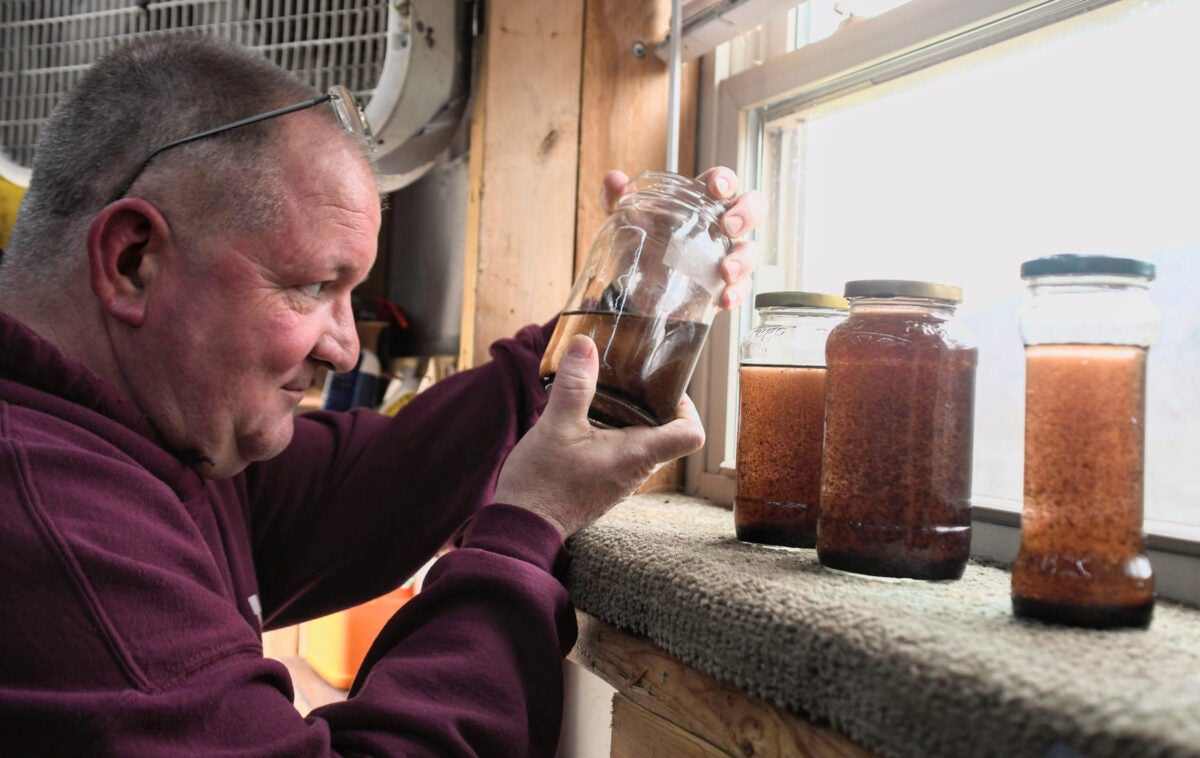
News
Tap water’s toxic secret
Nearly fifty years after the passage of the Safe Drinking Water Act, millions of Americans continue to drink water contaminated with lead, with a class of “forever chemicals” called PFAS, and with other toxins, including high levels of manganese. In a new investigation for Public Health Watch, science reporter Natasha Gilbert dives into the little-known but potentially urgent health threat that manganese in drinking water may pose. Manganese is a mineral necessary for human health but dangerous in large quantities, and its surplus linked to a variety of behavioral and developmental disorders in children. Gilbert spoke to Harvard Public Health senior editor Christine Mehta about the dangers of manganese toxicity, why it might be a growing problem in the United States, and the campaign to cover up the harmful effects of manganese contamination in drinking water.
This conversation has been edited for length and clarity.
Sign up for Harvard Public Health
Delivered to your inbox weekly.
Mehta: You just published an investigation on “black water” with Public Health Watch. What is “black water” and why is it important?

Gilbert: “Black water” is water that turns dark brown or black from manganese, a naturally-occurring metal found in rocks and soil. We consume manganese through food, air, and water, but scientists are learning that water is an increasingly problematic source of manganese, particularly for children and infants, who are more vulnerable to its toxicity and the effects on the brain. Also, manganese sometimes turns the water black and affects its taste, but not always. You can have manganese in the water and not know it. To be sure, you have to test the water.
Mehta: How does too much manganese affect human health?
Gilbert: It affects the brain, mostly. It can impact IQ and cause behavioral problems, particularly in children. It can also cause symptoms similar to Parkinson’s disease in adults. This has been observed in in adults who are exposed to high levels of manganese through their jobs, like welders. Usually, welders inhale manganese in the air, rather than consume it through food or water, and so those sorts of Parkinson’s-like symptoms haven’t been observed in children through drinking water.
Mehta: How does manganese get into the drinking water supply? How widespread is manganese contamination in U.S. drinking water?
Gilbert: The Environmental Protection Agency found that about two percent of the water systems they tested in the U.S. contained manganese above the levels they considered safe. That might not seem like a widespread problem, but it’s certainly tens of thousands of people, at least. But experts believe that that estimate isn’t the whole picture. It’s likely many, many more systems are impacted by high levels of manganese because the EPA survey focused mostly only on large water systems. Also, the government doesn’t actually have any regulations on how much manganese there should be in the water, only recommendations and health advisories. And the EPA recommendations are higher than those issued by the World Health Organization.
Mehta: Tell me about some of the towns you visited. How concerned were the people you interviewed about manganese in their drinking water?
Gilbert: Water authorities typically don’t test for manganese because it’s not regulated, so they don’t have to. It was quite difficult to find a community who was aware they had a manganese problem with their water. But eventually I did find this community: Industry, Pennsylvania, a small town northwest of Pittsburgh with a history of industrial production. Manganese is naturally occurring, but it’s also an industrial pollutant from coal mining, steel production, even fracking and agriculture. That extra manganese can leak into the water and cause manganese pollution. The town of Industry was interesting because it had natural sources of manganese, higher concentrations in the rocks in the area, as well as these industrial sources of pollution.

David Butts inspects tainted water collected from taps in his home in Industry, Pennsylvania, when his filter is shut off. Tests have shown his tap water contains manganese.
Photo: Natasha Gilbert
Mehta: You have this wonderful anecdote featuring an Industry resident, David Butts, who describes just how discolored his drinking water is, and how frustrating it is for him to filter the water himself. From what you observed, how disruptive is unsafe drinking water to people’s lives?
Gilbert: It’s really upsetting. You can you just imagine turning on your tap and this disgusting black sludge comes out. It is very distressing. And it impacts their daily lives. They have to go and buy bottled water. They have to figure out how deal with unusable running water out of the tap, not just to drink but to clean with. You don’t want to clean yourself in that dirty black water. And on top of that, they still have to pay for this water, adding insult to injury. These aren’t people who generally have money to throw around on expensive bottled water. It’s a working-class community where people are trying to make ends meet.
When I went to visit them, they had just started to organize collective action around the issue. They were going to the local water authority monthly meetings, bombarding them with public records requests, trying to get any information they could find. They were frustrated and motivated to get the problem sorted. And they’re still fighting now.
Mehta: Much of your investigation focuses on corporate group efforts to keep manganese off the EPA’s radar. Can you tell us more about what you found and why they’ve been so successful at doing so?
Gilbert: The EPA maintains something called the Drinking Water Contaminant Candidate List—basically a list of potential contaminants to drinking water systems but which aren’t actually regulated. Manganese has been on and off that list for a number of years. And many industries have an interest in manganese: steel manufacturers, coal, and so on. These industries came together to form the Manganese Interest Group, and have argued over time that manganese should not be on the EPA list. They’ve been important to influencing that process, as well as funding and supporting academic research that questions the need for tighter controls of manganese. What I found is they point to this academic research they’ve funded to influence regulation. They’re using their own funded evidence to make their arguments. It’s not independent.
Mehta: What impact are you hoping your story will have in the long-run?
Gilbert: Well, I hope this gives people affected by the problem some ammunition to take to their authorities and policymakers and say, “Look, this is a problem. You need to do something.” I also hope it raises awareness around the risks of manganese concentrations in water, especially for infants drinking formula made with tap water.
Top image: Kari Hoglund / iStock


